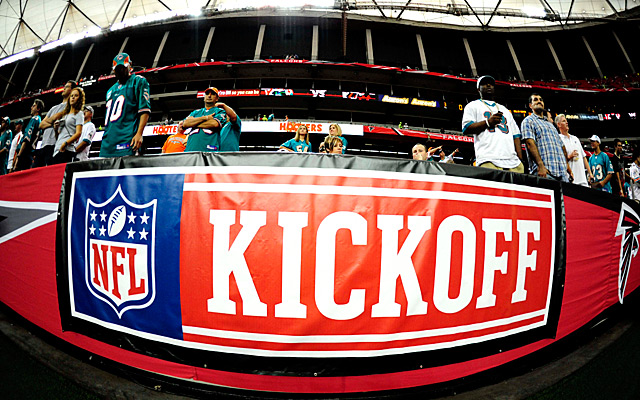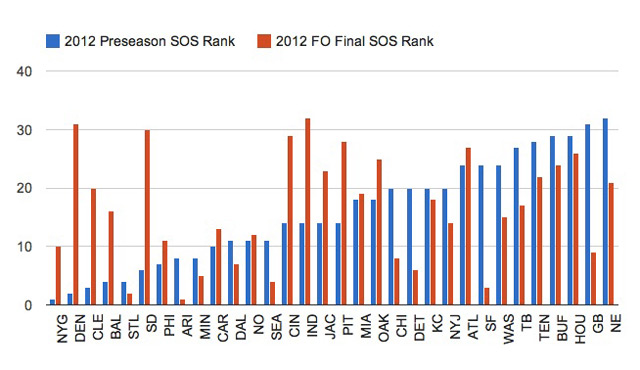
The 2013 NFL schedule will be released at 8 p.m. ET on Thursday. That, along with the NFL Draft next week, marks the unofficial halfway point in the offseason. Following May minicamps, things will slow down in earnest and then, before you know it, training camps will start in late July.
| More on NFL schedule |
| Related links |
For now, all fans and media know is which teams will face off in each of the 17 weeks of the regular season. And, from that, these same fans and media will try to separate good from bad, playoff teams from laughingstocks.
It's a silly, futile exercise, but there's a reason the NFL is this nation's most popular sport. Demand outstrips supply by a large margin. That means the seemingly meaningless -- like releasing a schedule nearly five months before the season -- is met with all the pomp and circumstance of a presidential inauguration.
And we're happy to do our part: Below is the 2013 NFL strength of schedule, based on the opponents' 2012 records, for every team from most difficult to easiest.
So, what should we make of this? That the Panthers face the league's toughest schedule in 2013, and that the Broncos appear to have the easiest run to the postseason? Recent history tells us there isn't much of a relationship between preseason strength of schedule and what actually happens.
A brief look at the last three years:
-- In 2012, the Giants had the toughest schedule heading into the season; by the time it was over, their schedule turned out to be 10th most difficult. *
-- In 2011, the Panthers (again!) had the toughest schedule. They finished with the seventh easiest.
-- In 2010, it was the Texans who ended up with a schedule of average difficulty (13th toughest).
Below are charts for the 2010, 2011 and 2012 seasons comparing preseason strength of schedule to Football Outsiders' end-of-season strength of schedule. The takeaway: Using opponents' records from the previous season, in general, isn't a very good predictor of a schedule's true toughness.



* Note: We used Football Outsiders' annual end-of-season ratings to determine the final schedule strength. This means it's not strictly an apples-to-apples comparison to the preseason strength of schedule. Specifically: FO factors in DVOA (read about it here) while the preseason strength of schedule looks only at opponents' records from the previous season.
Still, the charts provide some insight into why we shouldn't put too much stock in the 2013 strength of schedule, at least from the perspective of April. Teams change from one year to the next -- through roster turnover, coaching changes, players getting better or worse, injuries and dumb luck -- none of which can be taken into account now.
That said, we're guessing this won't slow anybody -- us included -- from speculating on how things will shake out in 2013. Because, really, what else do we have to do for the next few months?





















